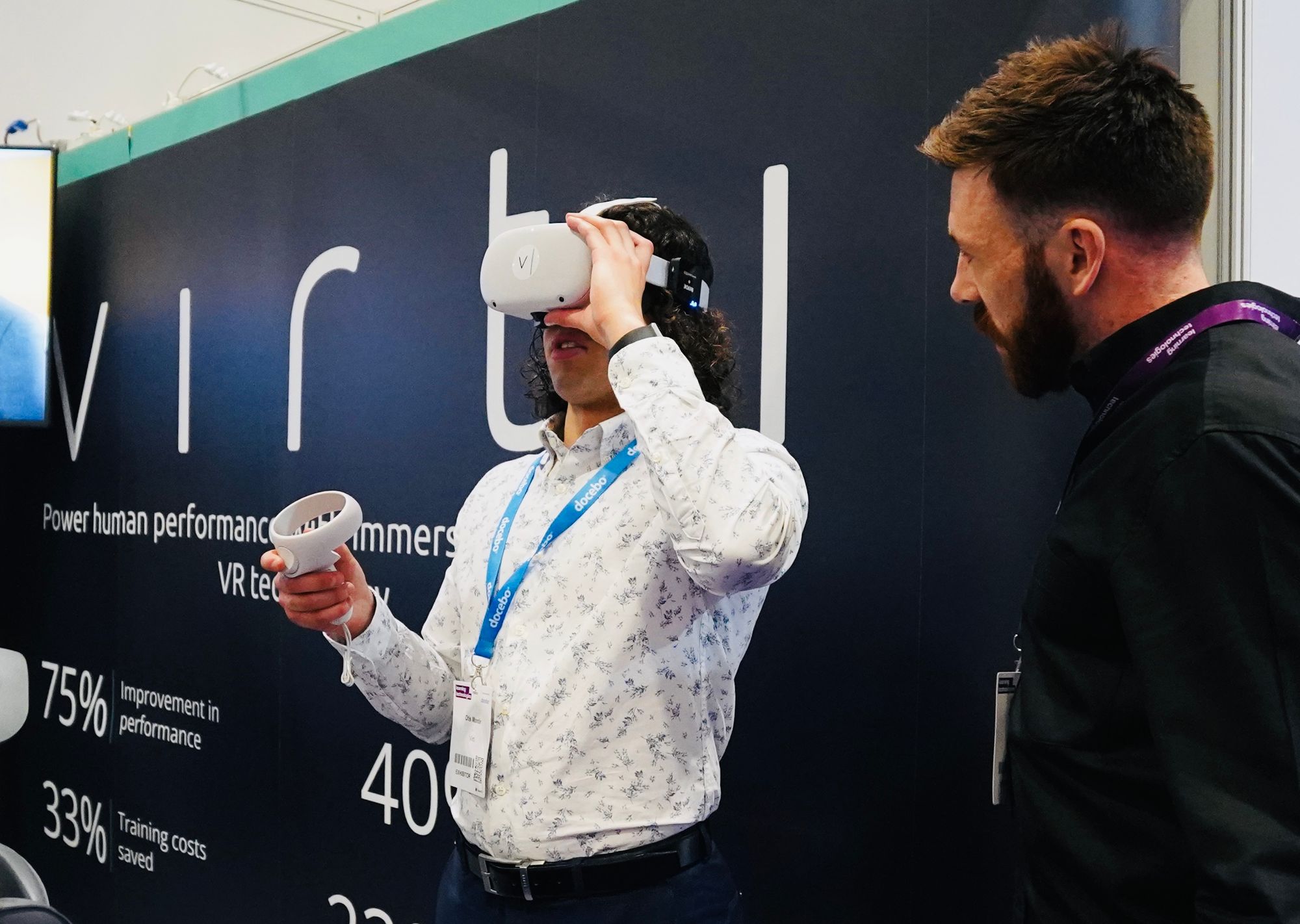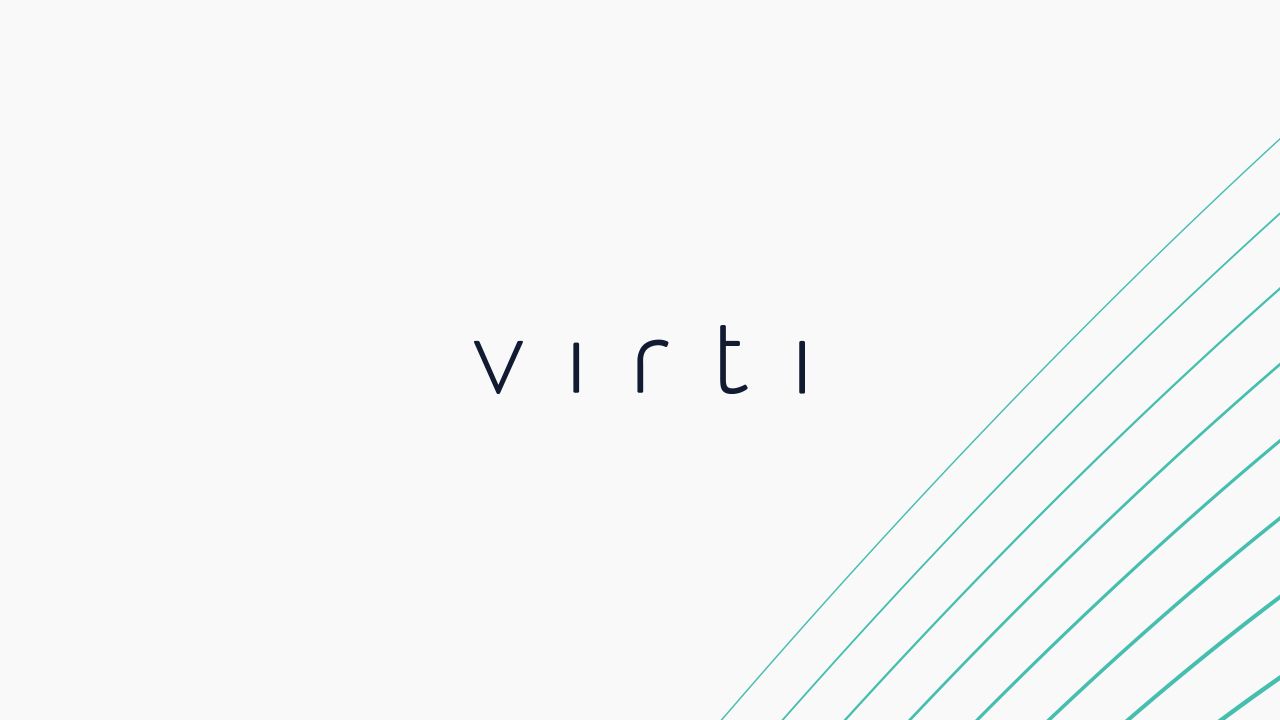How to nail an in-person VR demonstration
A 6-step guide on all things to consider when delivering a high-quality, in-person Virtual Reality headset demonstration.

Are you looking to "WOW!" your internal stakeholders with a live Demo of your VR proof of concept? Here are six things to consider based on Virti’s experience of delivering in-person demonstrations.
So you've just purchased some VR headsets, got your content loaded, and now you need to nail the face-to-face demo with your stakeholders. Their buy-in is critical to ensuring you create internal champions and transform the way learning is delivered within your organisation... but you've never demonstrated the headset experience to multiple people? Perhaps you've never had to think about 'best-practise' usage of the headsets?
Don't worry, sit tight. Virti's got you covered!
As you can imagine, our sales team gives countless demonstrations to customers and prospective clients every week. So they've put together their top six tips for creating the best experience on the day to ensure you deliver that “WOW!” moment.
- Prep, prep and more prep: The key to delivering the best experience is all in the preparation. Make a checklist a few days before your event and ensure everything is in place. Things to consider:
- Have you got enough space/seating in the room?
- Have you got enough time? How long do you intend each person to be in the headset?
- How are you transporting the headsets?
- Some industries still have robust COVID protocols. Have you got antibacterial wipes and cloths to clean the headsets/controllers between each use?
- Are the headsets all charged up? Have you got charger(s) with you on the day?
- Do you need an extra pair of hands to help deliver the demonstration? Do they know how to navigate the content?
- Check for updates: from time to time the headsets need software updates to fix bugs, security enhancements and general user improvements. The last thing you want on the day of your demonstration is to have to sit through a software update when you want to be showing off your new method of delivering improved learning outcomes. Turn all the headsets on the night before, connect to wi-fi and ensure all software updates are completed for the headsets, the controllers and the app you're using to show content. Each manufacturer is slightly different, if you can't find where to complete the updates, have a google.
- Offline Mode: We highly recommend you run the headsets in "offline mode". This means turning off Wi-Fi on the headsets (once you've completed all your previously mentioned updates). Content apps like Virti’s allow you to access them without connection to the Internet and download the content to the headset in the highest possible quality the night before. When the Wi-Fi is turned off, your app will no longer be able to search for updates - ensuring any content you're about to show is as you expect, and no last-minute edits or updates to the content will disturb the learner experience you're about to deliver.
- Be early: If possible, get to your room or destination for the presentation early. Lay out all the headsets and check each one is working as you expect, but remember to put the headset into sleep mode (often one click of the power button) to ensure the battery isn't being used whilst you set the scene for your demonstration.
- Consider the experience: When preparing for your demonstration, consider what content the user will need to see for the most meaningful experience. Will a stand-alone simulation be enough to deliver that “WOW!” moment? Or will the user need to see how a series of simulations could work? Before showing the user your chosen content, it’s always worth checking whether they’ve tried VR before. First-timers often need guidance on adjusting the headset to get the best screen clarity and how to use the controllers correctly. For some, the motion of being in VR can make them feel a little uneasy. We advise all those experiencing VR for the first time to be seated when exploring the content.
- Capture feedback: It's highly likely that for some, this will be their first experience of trying Virtual Reality. The first experience evokes a truly “WOW!” moment you'll want to capture as part of your feedback for any follow-up conversations. Use your mobile phone to record their experience wearing the headset and when they exit the experience (seek permission first, of course!). You can use a platform like Virti to embed forms that will capture real-time quantitative and qualitative feedback at the end of the simulation, so you don’t need a separate device.

Virti is the only all-in-one platform that can optimise the entire remote learner's journey.
If you've read this far, you're clearly interested in how innovative new tech can change the way your employees interact with learning.
Our award-winning learning platform empowers organisations like yours to create digital learning experiences that feel like real life.
We hope these six tips will help you think about the pre, during and post stages of delivering that all-important demonstration when seeking further buy-in on your journey of using Virtual Reality in your learning strategy.

